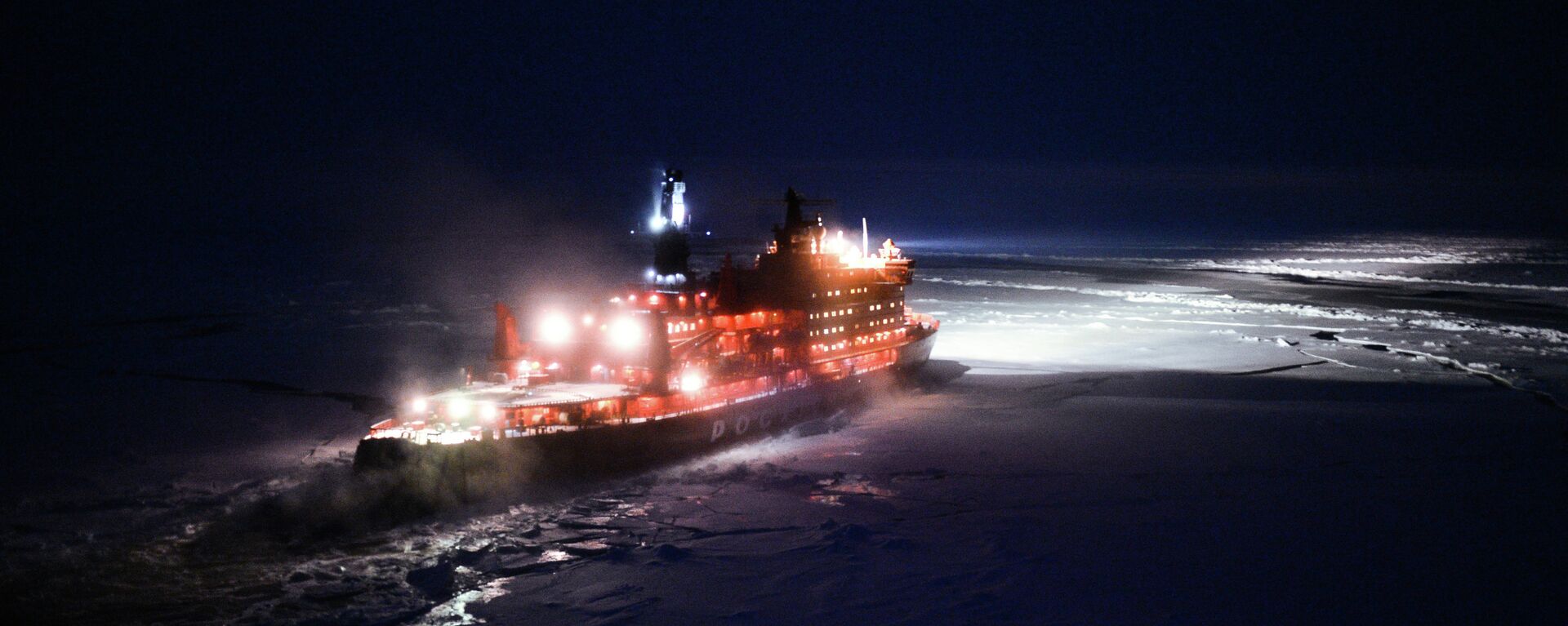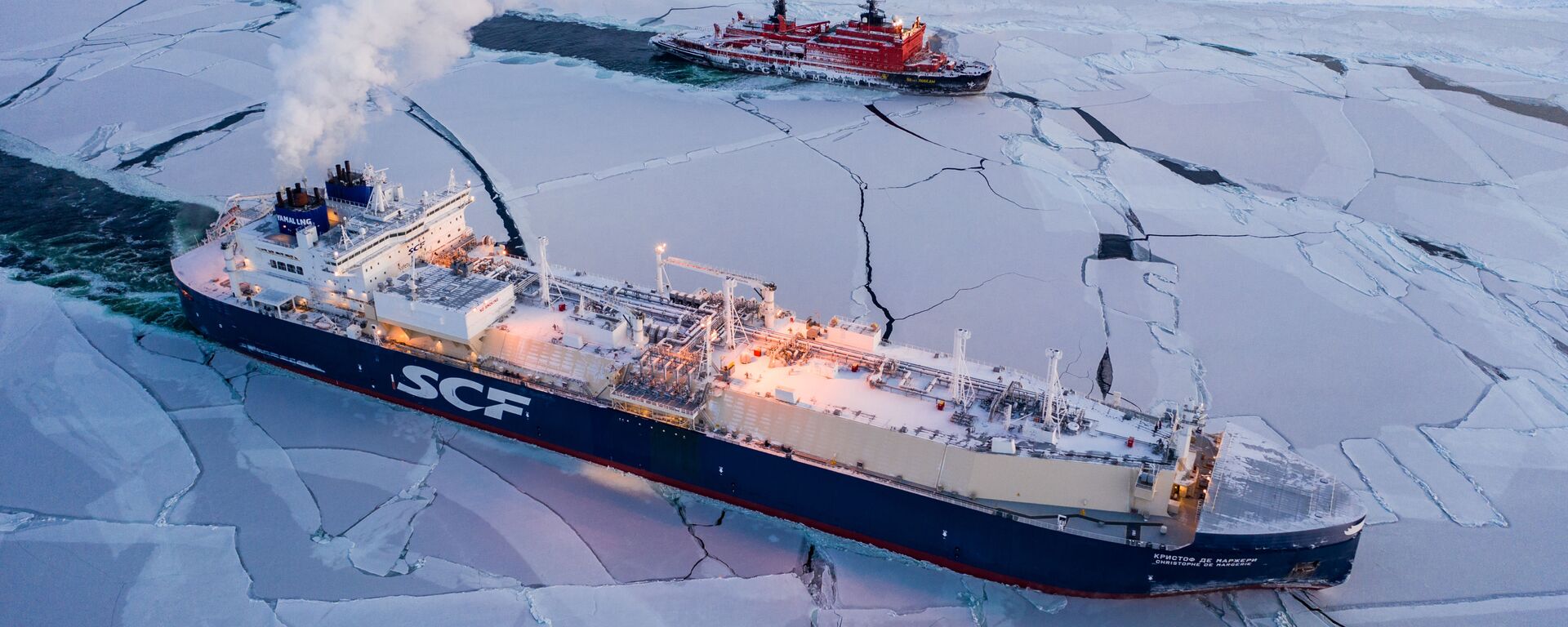https://sputnikglobe.com/20241231/conquering-frozen-arctic-inside-russias-cutting-edge-icebreakers-1121307162.html
Conquering Frozen Arctic: Inside Russia’s Cutting-Edge Icebreakers
Conquering Frozen Arctic: Inside Russia’s Cutting-Edge Icebreakers
Sputnik International
Russia’s nuclear icebreaker fleet currently numbers nearly a dozen ships that tirelessly work to ensure the safety of navigation in the Arctic and along the Northern Sea Route.
2024-12-31T06:56+0000
2024-12-31T06:56+0000
2024-12-31T06:56+0000
russia
russia
icebreaker
fleet
arctic
northern sea route
vessel
northern sea route
sibir
https://cdn1.img.sputnikglobe.com/img/07e8/0c/1f/1121313964_0:0:1920:1080_1920x0_80_0_0_d6044e1fcb83f2c621671df8ec2adf01.jpg
The fourth Project 22220 nuclear-powered icebreaker, the Yakutia, has joined Russia’s icebreaker fleet. Let’s take a closer look at Russia’s mighty icebreakers that are part of this project series.Yakutia It can escort tankers with a displacement of up to 100,000 tons through the Arctic’s frozen waters.The icebreaker is powered by two RITM-200 nuclear reactors, each generating 175 MWt, supported by twin turbo generators.The Yakutia can reach speeds of up to 22 knots in open water and 1.5–2 knots while navigating ice 2.8 meters thick. It is also capable of operating in 3-meter-thick ice at slower speeds.The vessel’s main characteristics:What About Other Russian Icebreakers?Project 22220 also includes the Arktika (Arctic), Sibir (Siberia), and Ural icebreakers, commissioned in 2020, 2021, and 2022, respectively. The Chukotka, Leningrad, and Stalingrad are expected to be completed by 2030.These icebreakers use variable draft technology, allowing efficient operation in both deep waters and shallow Siberian riverbeds.What is Project 22220 for?Project 22220 icebreakers are part of the program "Fundamentals of Russia’s State Policy in the Arctic for the Period Up to 2035," which aims to develop the Northern Sea Route.Earlier this year, President Vladimir Putin pledged that Russia would continue modernizing cargo transshipment and expanding port capacity along the Northern Sea Route, which exceeded 40 million tons in late 2023.
https://sputnikglobe.com/20240424/us-losing-ground-in-arctic-to-russia-due-to-lack-of-icebreaking-capability--coast-guard-1118097820.html
https://sputnikglobe.com/20240211/worlds-top-five-mightiest-icebreaker-fleets-1116728280.html
russia
arctic
Sputnik International
feedback@sputniknews.com
+74956456601
MIA „Rossiya Segodnya“
2024
Oleg Burunov
https://cdn1.img.sputnikglobe.com/img/07e4/09/0b/1080424846_0:0:2048:2048_100x100_80_0_0_3d7b461f8a98586fa3fe739930816aea.jpg
Oleg Burunov
https://cdn1.img.sputnikglobe.com/img/07e4/09/0b/1080424846_0:0:2048:2048_100x100_80_0_0_3d7b461f8a98586fa3fe739930816aea.jpg
News
en_EN
Sputnik International
feedback@sputniknews.com
+74956456601
MIA „Rossiya Segodnya“
korabl
Sputnik International
korabl
2024-12-31T06:56+0000
true
PT1M11S
Sputnik International
feedback@sputniknews.com
+74956456601
MIA „Rossiya Segodnya“
Oleg Burunov
https://cdn1.img.sputnikglobe.com/img/07e4/09/0b/1080424846_0:0:2048:2048_100x100_80_0_0_3d7b461f8a98586fa3fe739930816aea.jpg
russia's fourth project 22220 nuclear-powered icebreaker, russia's yakutia icebreaker, siberian rivers, the arctic’s western areas, the yakutia's characteristics
russia's fourth project 22220 nuclear-powered icebreaker, russia's yakutia icebreaker, siberian rivers, the arctic’s western areas, the yakutia's characteristics
Conquering Frozen Arctic: Inside Russia’s Cutting-Edge Icebreakers
Russia’s nuclear-powered icebreaker fleet currently numbers nearly a dozen ships that tirelessly work to ensure the safety of navigation in the Arctic and along the Northern Sea Route.
The fourth Project 22220 nuclear-powered icebreaker, the Yakutia, has joined
Russia’s icebreaker fleet. Let’s take a closer look at Russia’s mighty icebreakers that are part of this project series.
It can escort tankers with a displacement of up to 100,000 tons through
the Arctic’s frozen waters.
The icebreaker is powered by two RITM-200 nuclear reactors, each generating 175 MWt, supported by twin turbo generators.
The Yakutia can reach speeds of up to 22 knots in open water and 1.5–2 knots while navigating ice 2.8 meters thick. It is also capable of operating in 3-meter-thick ice at slower speeds.
The vessel’s main characteristics:
Maximum icebreaking capacity: 3-meter-thick ice
Full displacement: 33,540 tons
Estimated service life: 40 years
What About Other Russian Icebreakers?
Project 22220 also includes the Arktika (Arctic), Sibir (Siberia), and Ural icebreakers, commissioned in 2020, 2021, and 2022, respectively. The Chukotka, Leningrad, and Stalingrad are expected to be completed by 2030.
These icebreakers use variable draft technology, allowing efficient operation in both deep waters and shallow Siberian riverbeds.
Their primary task is to ensure year-round navigation in the Arctic’s western regions, including the Barents, Pechora, and Kara Seas.
What is Project 22220 for?
Project 22220 icebreakers are part of the program "Fundamentals of Russia’s State Policy in the Arctic for the Period Up to 2035," which aims to develop the Northern Sea Route.
Earlier this year, President Vladimir Putin pledged that Russia would continue modernizing cargo transshipment and expanding port capacity along
the Northern Sea Route, which exceeded 40 million tons in late 2023.

11 February 2024, 17:46 GMT




